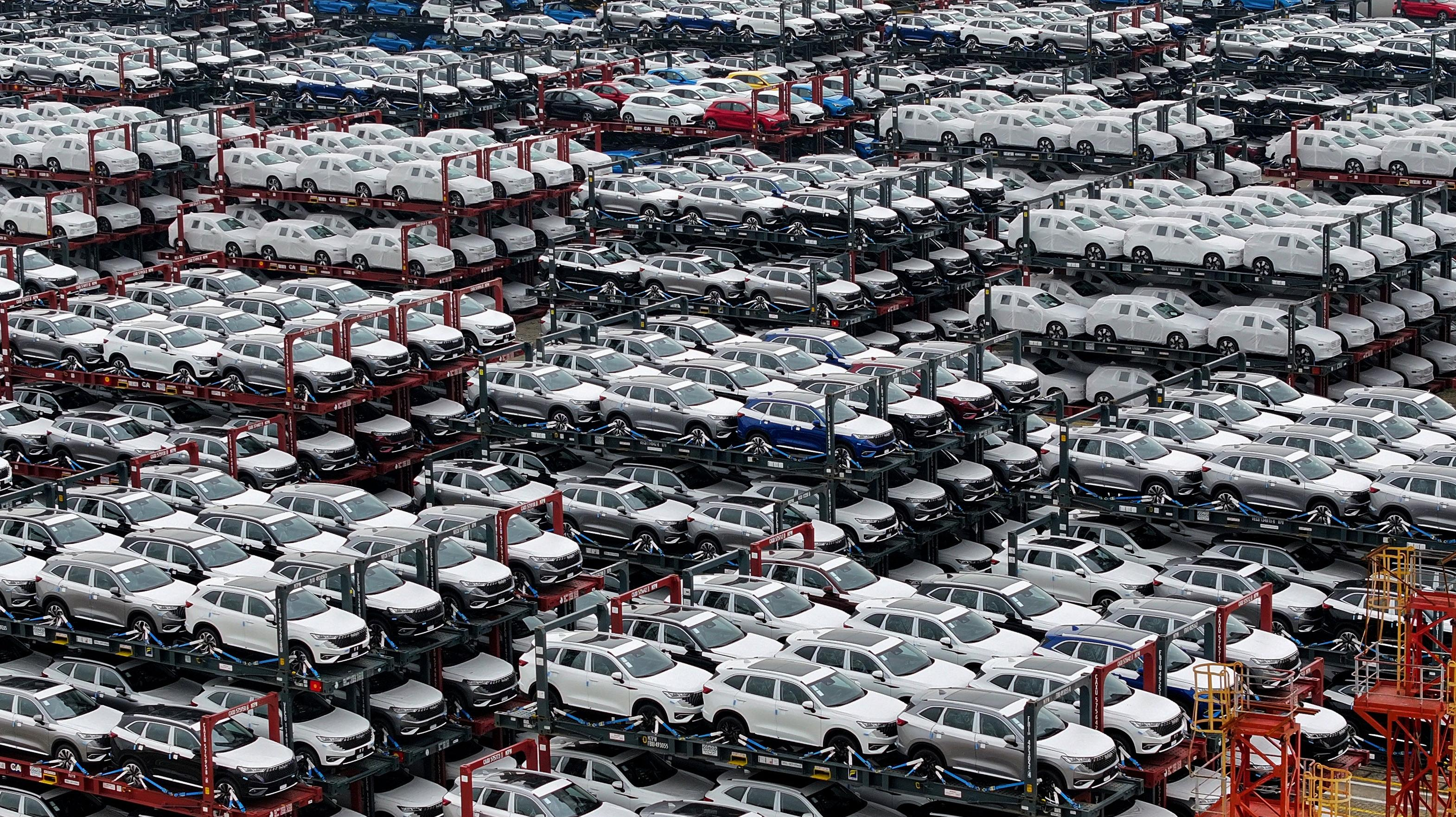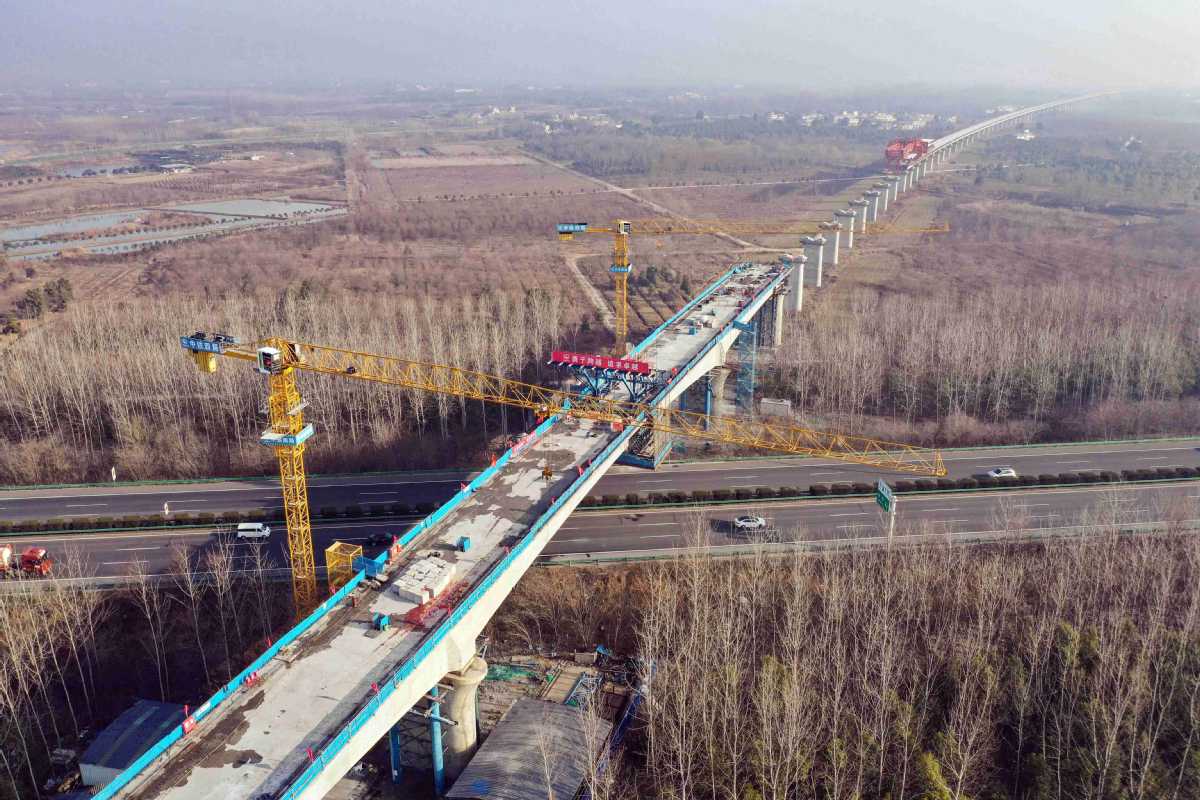
China Unveils Sweeping Campaign to End Deflation and Push Inflation to 2% by End 2025
China's Inflation Imperative: Racing Against Deflationary Gravity
BEIJING — In the sterile conference rooms of China's central bank, economists are fighting a battle that would have seemed unthinkable just three years ago: desperately trying to make things more expensive.

After months of zero inflation readings and consecutive quarters of price declines, China has launched the most comprehensive inflation-targeting campaign in its modern economic history. The goal is deceptively simple yet monumentally challenging: push inflation to 2% by December 2025. The stakes could not be higher—failure risks cementing a deflationary spiral that would reshape the global economy.
China's Consumer Price Index (CPI) has hovered near zero, indicating significant deflationary pressure in the economy.
| Date | Year-over-Year Change |
|---|---|
| July 2025 | 0.0% |
| June 2025 | 0.1% |
| April 2025 | -0.1% |
| March 2025 | -0.1% |
| February 2025 | -0.7% |
A deflationary spiral is a dangerous economic condition where falling prices lead consumers to delay purchases, anticipating even lower prices in the future. This drop in demand forces businesses to cut prices and production further, often resulting in layoffs and a worsening economic downturn.
For Li Wei, a furniture manufacturer in Guangdong province, the government's inflation campaign represents salvation from a pricing death spiral that has consumed his industry. "We've been selling below cost for eight months," he explained, requesting anonymity due to the sensitivity of discussing profit margins. "The government's anti-price war policies might be the only thing that saves us."
China's inflation strategy operates on four synchronized fronts: eliminating destructive price competition, expanding social insurance to boost consumption, incentivizing births to increase demand, and flooding financial markets with liquidity. Together, these policies represent a 5 trillion yuan bet that central planning can overcome deflationary gravity.
The Price War Prohibition: Reengineering Competition
At the heart of China's inflation strategy lies an unprecedented intervention in market pricing mechanisms. The government's campaign against "neijuan"—destructive competition—targets the very market dynamics that have driven prices relentlessly downward across key industries.
"Neijuan" (内卷) is a popular Chinese concept, often translated as "involution," that describes a vicious cycle of intense internal competition. It refers to a zero-sum game where individuals feel trapped, working increasingly harder not for meaningful progress, but simply to keep up with others and avoid falling behind.
The numbers reveal the scope of deflationary pressure: industrial profits dropped 1.8% in the first half of 2025, while producer prices fell 3.6% year-over-year in July. Electric vehicle manufacturers, solar panel producers, and battery companies have engaged in pricing wars so severe that entire sectors operate at losses.
China's Producer Price Index (PPI) has been in negative territory, reflecting falling prices at the factory gate and intense industrial competition.
| Date | Producer Price Index (YoY %) |
|---|---|
| July 2025 | -3.6% |
| June 2025 | -3.6% |
| May 2025 | -3.3% |
"What we're witnessing represents a fundamental breakdown of rational pricing mechanisms," observed a senior economist familiar with policy discussions. "Companies are trapped in competitive dynamics that benefit no one—not producers, not ultimately consumers, and certainly not the broader economy."

The State Administration for Market Regulation's direct meetings with corporate giants including Alibaba and Mercedes-Benz China signal the seriousness of intervention. Local governments in Jiangsu and Hunan provinces now coordinate industrial planning to prevent competitive races to the bottom—a return to state-directed competition management not seen since the 1990s.
For manufacturers like Li Wei, these policies offer hope that pricing discipline might return to industries where survival has meant accepting unsustainable losses. The proposed amendments to China's Pricing Law would legally prohibit below-cost selling, potentially allowing industries to rebuild profit margins and contribute to broader inflationary pressure.
Social Insurance as Inflation Engine
China's expansion of mandatory social insurance coverage represents perhaps the most sophisticated demand-side stimulus ever attempted. By forcing millions into contributory schemes, the government creates dual inflationary pressure: immediate income redistribution and medium-term consumption increases.
The mechanics are revealing. Total employee contributions now range from 15.2% in Guangzhou to 22.5% in Beijing, while employer portions reach above 33% in many cities. Foreign workers, previously exempt, must now contribute within 30 days of permit issuance—affecting hundreds of thousands of expatriate professionals whose spending patterns typically exceed local averages.
Zhang Min, a 32-year-old software engineer in Shenzhen, represents the target demographic for this policy transformation. Previously operating as a freelancer to avoid social insurance contributions, she now faces mandatory enrollment that will reduce her take-home income by roughly 20% while simultaneously providing healthcare and pension benefits.
"The immediate impact feels like a pay cut," Zhang acknowledged. "But the long-term security might actually encourage me to spend more on things I've been postponing—maybe even consider having a child."
This behavioral shift represents exactly what policymakers hope to achieve. The Supreme People's Court's late-2025 interpretation invalidating employer-employee agreements to forgo contributions eliminates a common avoidance practice, ensuring broader participation in what amounts to a massive income redistribution system.
Enhanced maternity allowance processing—reduced from months to 2-3 days in many regions—exemplifies how administrative efficiency can amplify policy impact. Faster payments mean quicker consumption, contributing more immediately to inflationary pressure.
Demographic Engineering for Economic Revival
China's first nationwide childcare subsidy program reveals how demographic policy can function as inflation strategy. The 3,600 yuan annual payment for each child under three, retroactive to January 2025, targets over 20 million families with direct cash transfers designed to stimulate immediate consumption.
China's fertility rate has fallen to historic lows, posing a long-term challenge to economic growth and domestic demand.
| Year | Fertility Rate (births per woman) | Birth Rate (per 1,000 people) |
|---|---|---|
| 2021 | 1.15 | 7.52 |
| 2022 | 1.03 | 6.77 |
| 2023 | 1.00 | 6.39 |
Local variations demonstrate regional desperation to boost birth rates and associated spending. Hohhot's 100,000 yuan subsidy for third children represents a 2,000% increase over previous incentives—a figure that would bankrupt local finances without central coordination. Shenyang's 500 yuan monthly payments for third children signal similar urgency across regions facing population decline.
For Liu Xiaoming and his wife in Jinan, these incentives are reshaping family planning decisions with direct economic implications. "We weren't considering a third child due to costs," Liu explained. "But with the national subsidy plus our local incentives, the economics completely change. We're now looking at baby products, considering a larger apartment, planning for childcare services."

This multiplier effect represents precisely what economists call the "demographic consumption premium"—families with young children spend disproportionately on goods and services that drive broader price increases. From infant formula to educational services, housing to healthcare, birth incentives create consumption cascades that ripple through the economy.
The policy's retroactive application ensures immediate impact, while tax-exempt status and exclusion from social assistance calculations maximize household purchasing power. Over 80% of newborns now receive national insurance coverage in their birth year, reducing family financial stress and encouraging consumption.
Financial Market Lubrication
China's monetary and fiscal expansion represents the most aggressive liquidity injection since the 2008 financial crisis, explicitly designed to combat deflationary expectations while supporting asset price inflation.
The People's Bank of China's May 2025 package—a 0.5 percentage point Reserve Requirement Ratio cut releasing 1 trillion yuan—signals central bank commitment to flooding markets with liquidity. Combined with repo rate reductions and relending rate cuts, monetary authorities have abandoned previous restraint in favor of explicit reflation.
Financial markets have become direct inflation battlegrounds. The China Securities Regulatory Commission's 30% reduction in retail transaction fees encourages equity participation, while the three-month IPO suspension prevents new supply from dampening prices. The 200-billion-yuan market stabilization fund represents direct government price support.
Most significantly, state-owned insurers must allocate 30% of new premiums to equities starting in 2025. This forced allocation represents approximately 400 billion yuan in mandated equity purchases annually—artificial demand designed to inflate asset prices and create wealth effects that encourage consumption.
Chen Yu, a portfolio manager at a state-owned insurance company, described the policy's impact: "We're essentially required to buy equities regardless of valuation. The government is using our balance sheets to inflate markets, hoping higher asset prices will make people feel wealthier and spend more."
Fiscal Acceleration: The 4% Solution
China's decision to raise its fiscal deficit target to 4% of GDP—the highest in three decades—abandons conservative fiscal principles in favor of direct inflation stimulation. The 4.4 trillion yuan in local government special-purpose bonds and 1.3 trillion yuan in ultra-long treasury bonds represent financing mechanisms designed to inject money directly into the economy.

Infrastructure spending exceeding 5 trillion yuan targets construction and development projects with immediate price impacts. From steel and cement to construction labor and equipment, government spending creates demand pressures designed to reverse deflationary trends in key sectors.
Wang Lei, a construction materials supplier in Hebei province, has observed the policy impact firsthand. "Government projects are finally paying market rates again," he noted. "For two years, we've been forced to bid below cost just to stay busy. Now we're seeing prices stabilize, even increase slightly."
This represents exactly the transmission mechanism policymakers hope to achieve—government spending that establishes price floors and creates inflationary expectations throughout supply chains.
Investment Implications: Positioning for Reflation
China's comprehensive inflation strategy creates distinct opportunities for sophisticated investors, though success depends on accurately timing policy transmission mechanisms.
Anti-neijuan enforcement may consolidate fragmented industries, particularly benefiting surviving players in electric vehicles, solar manufacturing, and battery production. Companies demonstrating pricing discipline during competitive downturns could experience significant margin expansion if government intervention succeeds.
Social insurance expansion creates structural demand growth in financial services, healthcare, and consumer sectors serving newly-covered populations. Insurance companies face both regulatory support and mandated equity allocations, potentially creating performance advantages despite reduced investment flexibility.
Birth incentive policies could revitalize sectors targeting young families—consumer goods, education services, healthcare, and housing. However, demographic policy effects typically materialize over years rather than quarters, requiring patient capital allocation.
Infrastructure spending benefits remain concentrated among state-connected enterprises, though private sector spillovers in construction materials, equipment manufacturing, and logistics services may provide opportunities for nimble investors.
Currency implications deserve particular attention. Successful inflation targeting could strengthen the yuan against currencies of economies still fighting inflation, while failure might necessitate further devaluation to maintain export competitiveness.
Investment considerations must account for policy sustainability risks, implementation coordination challenges, and the possibility that structural deflationary forces prove more persistent than policy interventions. Historical experience suggests significant volatility during Chinese policy transitions, requiring careful position sizing and risk management.
The Deflation Trap Endures
Despite this unprecedented policy mobilization, China's 2% inflation target remains ambitious given persistent structural headwinds. July 2025's 0% inflation rate and accelerating producer price deflation suggest deflationary momentum retains significant power.
Fundamental challenges resist policy solutions: aging demographics reduce natural demand growth, property sector weakness eliminates traditional wealth effects, and global trade tensions limit export-driven inflation transmission. The anti-neijuan campaign addresses symptoms while underlying technological advancement and global competitive pressures continue driving prices downward.
China's population pyramid is becoming top-heavy, illustrating the demographic challenge of an aging population and shrinking workforce.
| Year | Population Aged 60+ (%) | Population Aged 65+ (%) | Old-Age Dependency Ratio (%) |
|---|---|---|---|
| 2020 | Not available | 12.34% | Not available |
| 2022 | 19.8% | 14.9% | 21.8% |
| 2023 | 21.1% | 15.4% | 22.5% |
China's multi-trillion yuan inflation gamble represents perhaps the most comprehensive macroeconomic intervention in modern history. Whether central planning can overcome deflationary gravity will determine not only China's economic trajectory but global inflation dynamics for the remainder of the decade. For millions of Chinese workers, businesses, and families, the outcome will reshape their economic reality in ways that extend far beyond central bank targets and policy pronouncements.
The race against deflationary gravity has begun—and the entire world economy hangs in the balance.
*Disclaimer: Names of individuals quoted in this article have been changed to protect their privacy.